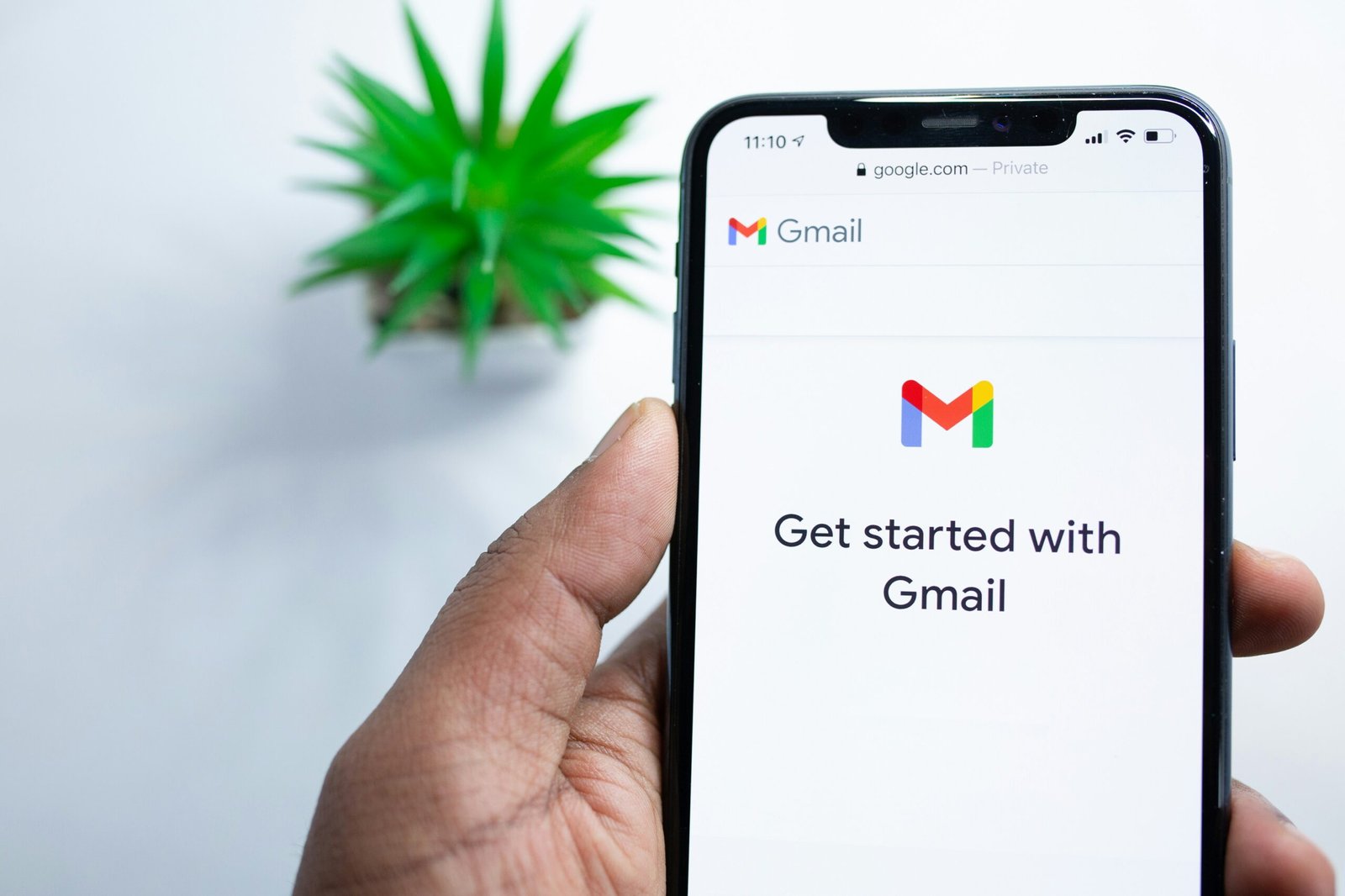Introduction to Professional Networking Emails
In the modern professional landscape, networking stands as a cornerstone for career growth and business development. Building and maintaining a robust network of professional contacts can open doors to new opportunities, foster collaborations, and provide support in various aspects of one’s career. Among the myriad of tools available for networking, email remains an indispensable medium due to its efficiency, formality, and widespread acceptance.
Professional networking emails play a pivotal role in initiating and nurturing relationships. A thoughtfully crafted email can make a lasting impression, demonstrating your professionalism and respect for the recipient’s time. Utilizing well-designed email templates offers several advantages. Firstly, it saves time by providing a structured format that can be easily customized for different contexts. This efficiency is invaluable in a fast-paced professional environment where timely communication is crucial.
Secondly, email templates ensure consistency across your communications. By adhering to a standardized format, you convey a coherent and professional image, minimizing the risk of overlooking important details. This consistency is particularly beneficial when reaching out to multiple contacts or maintaining regular communication with your network.
Lastly, well-crafted email templates can significantly enhance the impact of your messages. They help you articulate your thoughts clearly and concisely, increasing the likelihood of eliciting a positive response. A polished email reflects your attention to detail and dedication, qualities that are highly regarded in professional settings.
Throughout this blog post, we will explore various types of professional networking emails, providing you with templates designed to address different scenarios. From initial outreach and follow-ups to requests for informational interviews and expressions of gratitude, each template is tailored to help you navigate the nuances of professional communication with ease and confidence. By leveraging these templates, you can strengthen your professional network and maximize the benefits of your career development efforts.
Cold Outreach Emails
Crafting an effective cold outreach email is both an art and a science. The first step in creating a successful cold email is thorough research on your recipient. Understanding their background, interests, and current work can provide invaluable insights that will help you personalize your message, thereby increasing the likelihood of a positive response.
Personalization is a key element in cold outreach. Start your email with a personalized greeting and reference any common connections or shared interests. This establishes a sense of familiarity and demonstrates that your email is not just another generic message. A compelling subject line is equally crucial; it should be concise yet intriguing enough to entice the recipient to open the email. For instance, “Exploring Collaboration Opportunities” or “Innovative Ideas for [Recipient’s Company]” can capture attention more effectively than a bland or overly salesy subject line.
Providing value to the recipient is essential. Clearly articulate why you are reaching out and how it can benefit them. Whether you are seeking to establish a mentorship, propose a partnership, or offer a service, the focus should always be on the value proposition for the recipient. For example, if reaching out to a potential mentor, you might say, “I admire your work in [specific field] and would greatly appreciate the opportunity to learn from your experiences.”
Here are a few example email templates for different scenarios:
Email Template for Reaching Out to a Potential Mentor
Subject: Seeking Guidance in [Field/Industry]
Dear [Recipient’s Name],
I have been following your work in [specific field] and greatly admire your achievements. I am currently [briefly describe your current role or situation]. I would be honored if you could spare some time to provide me with guidance on [specific topic or area]. Your insights would be invaluable to my professional growth.
Thank you for considering my request. I look forward to the possibility of connecting.
Warm regards,
[Your Name]
Email Template for Reaching Out to a Potential Partner
Subject: Exploring Collaboration Opportunities
Dear [Recipient’s Name],
I am [your name], [your position], at [your company]. We are big fans of the innovative work you are doing at [recipient’s company]. I believe there is a great opportunity for a mutually beneficial collaboration between our organizations. I would love to discuss how we can work together to achieve shared goals.
Looking forward to your response.
Best regards,
[Your Name]
Email Template for Reaching Out to a Potential Client
Subject: Innovative Ideas for [Recipient’s Company]
Dear [Recipient’s Name],
I hope this message finds you well. My name is [your name], and I am reaching out from [your company]. We specialize in [briefly describe your service or product]. I have some innovative ideas that could greatly benefit [recipient’s company]. I would love to schedule a brief call to discuss how we can help you achieve your goals.
Thank you for your time and consideration.
Best regards,
[Your Name]
Lastly, the importance of follow-up emails cannot be overstated. If you do not receive a response within a week, send a polite follow-up email reiterating your initial message and expressing continued interest. Persistence, when done respectfully, can often turn a non-response into a fruitful connection.
Follow-Up Emails
Follow-up emails are a critical component in nurturing and solidifying professional relationships. They serve as a bridge between initial contact and long-term networking, ensuring that your presence remains memorable and your intentions clear. The timing and content of these follow-up emails are paramount. Sending a follow-up email within 24-48 hours after the initial meeting is generally considered optimal, as it demonstrates promptness and enthusiasm while the encounter is still fresh in both parties’ minds.
When crafting the content of your follow-up email, it is essential to be both polite and persistent. Begin by expressing gratitude for the initial interaction, mentioning specific points from your conversation to personalize the message. This approach not only shows attentiveness but also reinforces the relevance of your connection. Next, articulate the value you can bring to the table, whether it’s through a potential collaboration, sharing a useful resource, or simply continuing the discussion on a topic of mutual interest.
Here are a few example templates for different follow-up scenarios:
After a Meeting
Subject: Great Meeting You Yesterday!
Dear [Recipient’s Name],
I hope this email finds you well. It was a pleasure meeting you yesterday to discuss [meeting topic]. I found our conversation about [specific point] particularly insightful, and I am excited about the potential opportunities we discussed. Please let me know if there’s a convenient time for us to continue this conversation or if you need any additional information from my end.
Best regards,
[Your Name]
After a Conference
Subject: Following Up on Our Conversation at [Conference Name]
Dear [Recipient’s Name],
I hope you enjoyed the conference as much as I did. It was great to connect with you and discuss [specific topic]. I am particularly interested in exploring [specific opportunity or collaboration]. Please feel free to reach out if you’d like to discuss this further or if there are other ways we might collaborate.
Best regards,
[Your Name]
After a Networking Event
Subject: Nice Meeting You at [Event Name]
Dear [Recipient’s Name],
I trust you had a productive time at [Event Name]. I greatly enjoyed our conversation about [specific topic] and would love to continue discussing potential synergies between our work. Please let me know if you’re available for a coffee meeting next week or a quick call at your convenience.
Best regards,
[Your Name]
The balance between being persistent and respectful is delicate but vital. While it’s important to follow up and show genuine interest, it’s equally crucial to avoid coming across as overly aggressive or pushy. If the recipient does not respond after two or three follow-up emails, it might be best to give them space and revisit the conversation at a later time. This approach not only preserves the integrity of your professional relationship but also demonstrates respect for the recipient’s time and priorities.
Thank You Emails
Sending thank you emails in professional settings is a crucial practice that can significantly impact your career and relationships. These emails serve as a formal way to express gratitude and appreciation, reinforcing connections and leaving a positive impression. Whether it’s after an interview, a business meeting, or receiving assistance, a well-crafted thank you email can make a lasting difference.
Thank you emails are essential after an interview as they demonstrate your professionalism and enthusiasm for the position. By promptly sending a thank you note, you show the recipient that you value their time and consideration, which can set you apart from other candidates. Similarly, after a business meeting, expressing thanks can reinforce the relationship and keep the lines of communication open for future opportunities.
When thanking someone for their help, it’s important to acknowledge their effort and the impact it had on you or your project. A simple yet sincere message can strengthen your professional bond and encourage continued collaboration. Here are a few example templates to guide you:
Template 1: Post-Interview Thank You Email
Subject: Thank You for the Interview
Dear [Interviewer’s Name],
Thank you for taking the time to meet with me today. I am very excited about the opportunity to join [Company Name] and contribute to [specific department or project]. I appreciate the insights you shared about the role and the company culture. Please let me know if there is any further information I can provide. I look forward to hearing from you soon.
Best regards,
[Your Name]
Template 2: Post-Meeting Thank You Email
Subject: Thank You for the Productive Meeting
Dear [Recipient’s Name],
I wanted to express my gratitude for the meeting we had yesterday. Your insights and suggestions were invaluable, and I am confident that our collaboration will be fruitful. Thank you for your time and effort. I look forward to our continued partnership.
Best regards,
[Your Name]
To make your thank you emails more meaningful, personalize them by mentioning specific details from your interaction. This shows that you were attentive and genuinely appreciated the experience. Personalization can also include referencing any follow-up actions discussed or expressing enthusiasm about future engagements.
In conclusion, thank you emails are a simple yet powerful tool in professional networking. They help solidify relationships, express appreciation, and leave a positive impression that can open doors to future opportunities.
Request for Introduction Emails
Requesting an introduction from a mutual connection or third party can significantly boost your professional networking efforts. To ensure your request is effective, it is crucial to communicate your purpose clearly, show respect for the intermediary’s time, and make the process as seamless as possible for them. Here are some essential tips and example templates to guide you through crafting your request for introduction emails.
Firstly, when requesting an introduction, specify the purpose of the connection. Whether you are seeking to connect with a potential client, an industry expert, or a colleague in a different department, clarity is vital. Start by briefly explaining who you are and why you are seeking the introduction. This sets the stage for the intermediary to understand the importance and relevance of your request.
Secondly, demonstrate respect for the intermediary’s time. Acknowledge their effort in facilitating the introduction and express genuine gratitude. A well-crafted email should be concise, avoiding unnecessary details that may overwhelm the reader. Remember, the intermediary is doing you a favor, so make sure your email reflects your appreciation for their assistance.
Finally, simplify the process for the intermediary. Provide all necessary information, including your contact details and a brief introduction that they can forward to the potential connection. This not only saves the intermediary time but also ensures that the introduction is smooth and effective.
Here are a few example templates for different contexts:
Example 1: Requesting an Introduction to a Potential Client
Subject: Introduction Request for Potential Collaboration
Dear [Intermediary’s Name],
I hope this message finds you well. My name is [Your Name], and I am [Your Position] at [Your Company]. I am reaching out to request an introduction to [Potential Client’s Name], as I believe our companies could benefit from a collaborative partnership. Your introduction would be invaluable, and I would greatly appreciate your assistance in facilitating this connection.
Thank you for your time and consideration.
Best regards,
[Your Name]
Example 2: Requesting an Introduction to an Industry Expert
Subject: Introduction Request to Discuss [Topic/Industry]
Dear [Intermediary’s Name],
I hope you are doing well. My name is [Your Name], currently working as [Your Position] at [Your Company]. I am seeking an introduction to [Industry Expert’s Name] to discuss [specific topic/industry]. Given your connection with [Industry Expert’s Name], I was wondering if you could kindly facilitate an introduction. Your support in this matter would be greatly appreciated.
Thank you for your consideration.
Best regards,
[Your Name]
By following these guidelines and utilizing these templates, you can effectively request introductions that enhance your professional network, ultimately leading to valuable connections and opportunities.
Networking Event Follow-Up Emails
Networking events provide an excellent opportunity to connect with professionals in your industry. However, the real value lies in how you follow up with these contacts. A well-crafted follow-up email can transform a casual meeting into a meaningful professional relationship. Here are some best practices for creating effective networking event follow-up emails.
Firstly, it’s essential to reference specific conversations or shared interests from the event. This not only shows that you were genuinely engaged but also helps to jog the recipient’s memory. For instance, you might say, “I enjoyed our conversation about sustainable business practices at the conference last week.” Specificity demonstrates attentiveness and makes your email stand out among generic follow-ups.
Additionally, expressing interest in future collaboration is a key component of a successful follow-up email. This could be as simple as mentioning a willingness to discuss potential projects or explore mutual interests further. For example, “I would love to continue our discussion on potential collaboration opportunities.” This opens the door for ongoing communication and establishes a foundation for a professional relationship.
Suggesting next steps is another crucial element. Offering a clear path forward makes it easier for the recipient to respond positively. You could propose a meeting, a call, or even a coffee catch-up. For example, “Would you be available for a coffee next week to discuss this further?” This proactive approach shows initiative and helps facilitate continued engagement.
Timing and frequency of follow-up emails are also important. Ideally, you should send your first follow-up email within 24-48 hours of the event to maintain the momentum. If you don’t receive a response, it’s acceptable to send a polite reminder after a week. However, avoid excessive follow-ups, as this can come off as pushy.
Below are some example templates to illustrate how to craft follow-up emails that are engaging, relevant, and professional:
Template 1:
Subject: Great Meeting You at [Event Name]
Hi [Contact’s Name],
I enjoyed our conversation about [specific topic] at [Event Name]. I would love to explore potential collaboration opportunities. Are you available for a call next week?
Best, [Your Name]
Template 2:
Subject: Following Up from [Event Name]
Hi [Contact’s Name],
It was a pleasure meeting you at [Event Name]. I found our discussion on [shared interest] particularly insightful. Let’s catch up over coffee next week to discuss this further.
Best regards, [Your Name]
By following these guidelines, you can create follow-up emails that foster meaningful professional connections and pave the way for future collaborations.
LinkedIn Connection Request Emails
Crafting an effective LinkedIn connection request is crucial for expanding your professional network. A well-written message can significantly increase your chances of forming valuable connections. When creating your connection request, personalization is key. Start by addressing the recipient by name and mentioning any common interests or mutual connections. This demonstrates that you have taken the time to research and are genuinely interested in forming a meaningful connection.
For instance, if you’re looking to connect with industry peers, you might say something like, “Hi [Name], I noticed we both attended the recent [Industry Event] and share an interest in [Specific Topic]. I would love to connect and discuss our mutual interests further.” This approach not only personalizes the message but also establishes a foundation for further conversation.
When reaching out to potential clients, it’s essential to explain why you want to connect and how you can provide value. An example could be, “Hi [Name], I’ve been following your work at [Company] and am impressed by your recent project on [Specific Project]. As a [Your Job Title] at [Your Company], I believe we share common goals and could explore potential collaboration opportunities. Looking forward to connecting.” This template clearly states your intentions and highlights mutual benefits.
For connecting with thought leaders, it’s beneficial to acknowledge their expertise and express genuine admiration. A suitable template might read, “Hi [Name], I’ve been an avid reader of your publications on [Topic] and have found them incredibly insightful. As an emerging professional in [Industry], I would be honored to connect and learn from your experiences.” This respectful approach showcases your appreciation and eagerness to learn.
Regardless of the scenario, maintaining a professional tone is paramount. Be concise, respectful, and avoid overly casual language. Effective LinkedIn connection requests should be succinct, generally no longer than 300 characters, and should clearly convey your purpose. By following these guidelines, you can enhance your networking efforts and establish meaningful professional relationships.
Maintaining Long-Term Professional Relationships
Building and maintaining long-term professional relationships through email communication requires a delicate balance of consistency, authenticity, and relevance. Establishing a routine for keeping in touch is essential, but it is equally important to ensure that your communications do not come across as intrusive or self-serving. Regularly reaching out with meaningful updates, sharing valuable resources, or expressing genuine interest in the recipient’s work can help maintain and strengthen these connections.
To keep in touch without being intrusive, it’s advisable to schedule periodic check-ins. A simple template for a check-in email might look like this:
Subject: Catching Up
Hi [Name],
I hope this email finds you well. I wanted to reach out and see how things are going on your end. Is there anything new or exciting happening in your world? Looking forward to your update.
Best regards,
[Your Name]
Sharing relevant updates or resources can also add value to your professional relationships. This could be in the form of industry news, articles, or tools that might benefit the recipient. A template for sharing industry news could be:
Subject: Thought This Might Interest You
Hi [Name],
I came across this article and thought it might be of interest to you: [Link to Article]. It provides some insightful perspectives on [Topic]. I’d love to hear your thoughts on it.
Best,
[Your Name]
Additionally, recognizing and celebrating the achievements of your professional contacts can further solidify your relationships. Congratulating someone on a recent accomplishment, whether a promotion, a new project, or a published article, shows that you are attentive and supportive. Here is a template for congratulating achievements:
Subject: Congratulations on Your Achievement!
Hi [Name],
I wanted to extend my heartfelt congratulations on [specific achievement]. Your hard work and dedication are truly inspiring. Wishing you continued success in all your endeavors.
Warm regards,
[Your Name]
Consistency and authenticity are the cornerstones of long-term networking. By regularly and genuinely engaging with your professional network, you can foster relationships that are not only beneficial but also fulfilling. Keep your communications relevant, respectful, and sincere to build a strong, enduring professional network.





